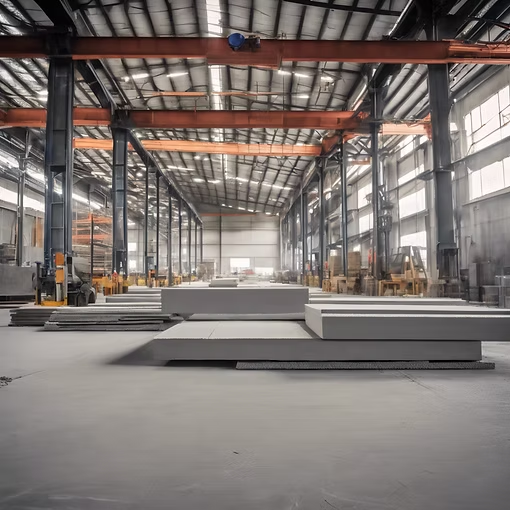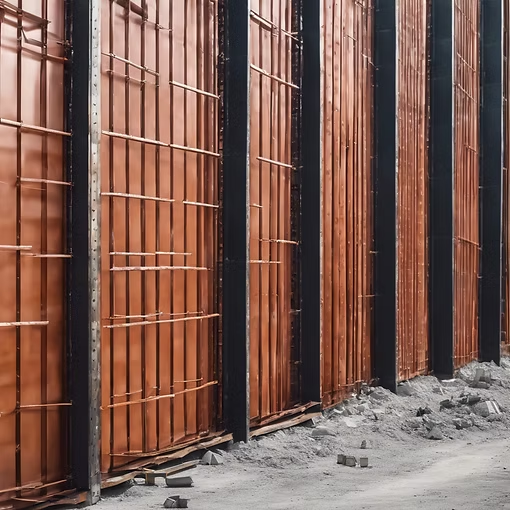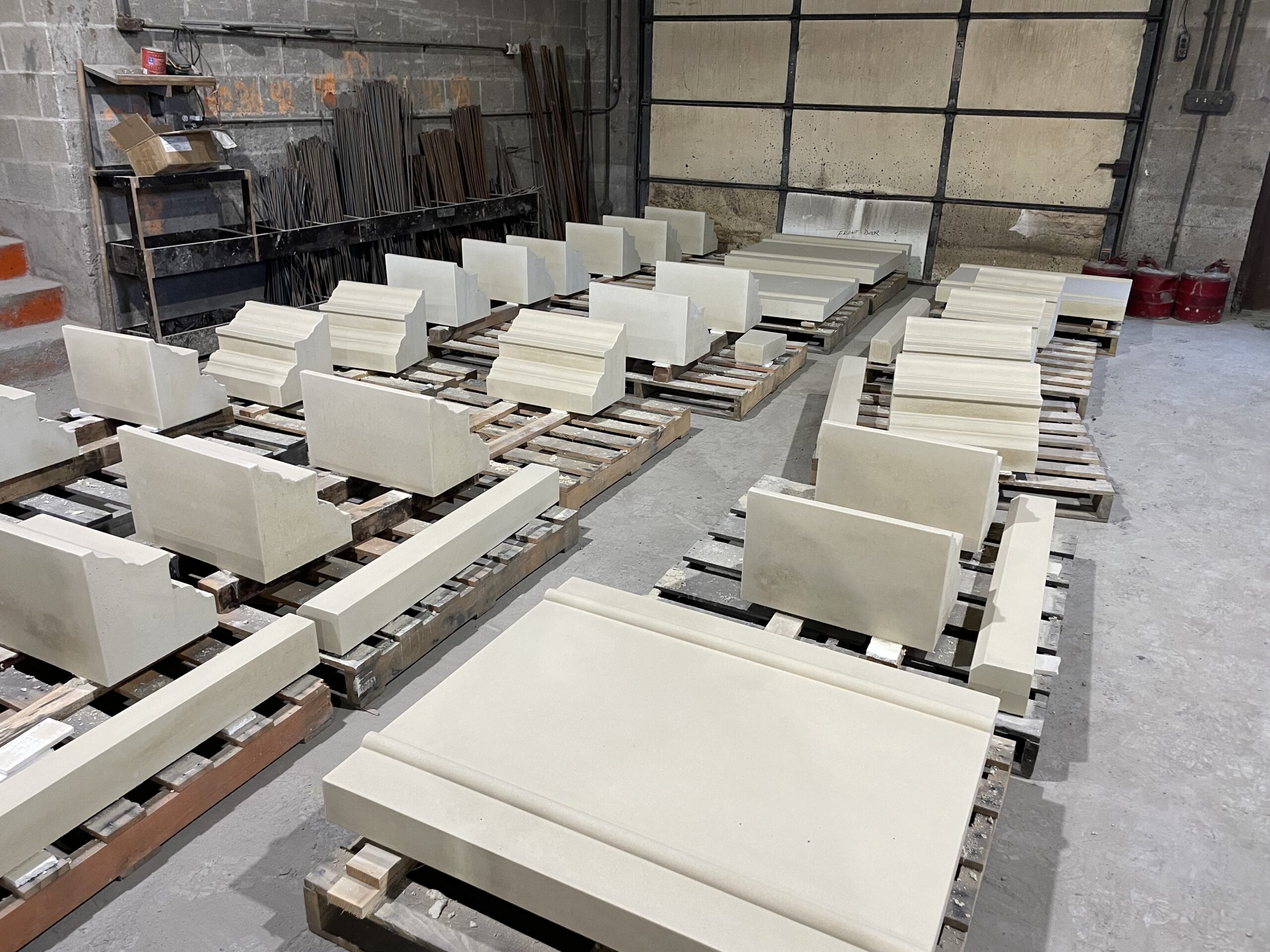Choosing the right building material can save money and time in construction projects. Precast concrete and steel are popular options, each with unique benefits and costs. This article breaks down their prices, labor needs, durability, and environmental impact to guide your decision.

Key Takeaways
- Precast concrete generally has a lower material cost than steel, and its prices tend to be more stable over time because it’s often produced locally.
- Installing precast concrete can be less labor-intensive and faster compared to steel, which might require skilled workers for intricate on-site work like welding or bolting.
- While steel is known for high structural strength, precast concrete excels in durability—resisting weather conditions and fire—which makes it a long-lasting option.
- When it comes to energy efficiency and sustainability, precast concrete outperforms steel by having better thermal properties and generating a lower carbon footprint during production.
- The total cost-effectiveness of using precast concrete over steel depends on multiple factors such as upfront costs, labor expenses, construction timelines, environmental impact, and the need for proper planning.
Cost Comparison between Precast Concrete and Steel
Precast concrete and steel have distinct differences in material costs, labor costs, and construction time that should be considered when evaluating their overall cost-effectiveness for a project.
Material Costs
When comparing the material costs of precast concrete and steel, it’s essential to evaluate the current market prices for both, which can fluctuate over time based on demand, supply disruptions, and other economic factors. Below is a simplified table that outlines the material costs associated with each construction material.
| Precast Concrete | Steel |
|---|---|
| Generally lower initial material cost than steel | Cost can vary greatly with market fluctuations |
| Prices stable over time due to local production | International demand affects steel prices |
| Bulk orders may reduce cost | Price sensitive to tariffs and trade policies |
| No need for fireproofing treatments | Additional costs for fireproofing |
| Transportation costs lower for local projects | Higher transportation costs due to weight |
Strength and Durability
This section will compare the structural strength and durability of both materials to determine their effectiveness in construction projects.
Steel’s Superior Strength
Steel offers superior strength compared to precast concrete, providing a high level of structural integrity and stability. This strength allows for the construction of taller and more expansive buildings without sacrificing safety or durability.
The inherent tensile strength of steel also makes it an ideal choice for structures that require flexibility and resistance to external forces, ensuring long-term performance and reliability.
The strength of steel framing minimizes the need for additional support elements, reducing overall material costs while maintaining structural integrity. Additionally, steel’s exceptional load-bearing capacity allows for customizable designs that can accommodate diverse architectural requirements, making it a versatile choice for various construction projects.

Durability of Precast Concrete
Precast concrete withstands harsh weather conditions, corrosion, and general wear and tear over time, making it a long-lasting construction material. The inherent strength of precast concrete also contributes to its durability, ensuring that structures remain robust and resilient for decades.
In addition to the structural integrity of precast concrete, its resistance to fire and seismic activity further reinforces its position as a durable building material. This resilience makes precast concrete an ideal choice for projects requiring long-term performance and reliability.
Environmental Impact
Considering the energy efficiency and carbon footprint of precast concrete versus steel construction, it’s important to assess the environmental impact of both materials.
Energy Efficiency
Precast concrete demonstrates superior energy efficiency compared to steel. Its thermal mass can store and release heat, reducing the need for excessive heating and cooling. This results in lower energy consumption over time, making precast concrete a more sustainable choice for construction projects.
Carbon Footprint
Precast concrete construction produces a lower carbon footprint compared to steel. The extraction and processing of raw materials for steel production release substantial amounts of CO2 into the atmosphere. The production process for precast concrete involves less energy and emits fewer greenhouse gasses.
Conclusion
When considering whether precast concrete is cheaper than steel, it’s important to weigh the material costs, labor costs, construction time, strength and durability, and environmental impact.
By carefully evaluating these factors and properly planning and designing a project, you can determine the most cost-effective construction material for your specific needs.
FAQs
1. How does precast concrete compare to steel in terms of cost?
Precast concrete often costs less than steel when you consider material and labor expenses for construction projects.
2. Is precast concrete more sustainable than steel?
Yes, precast concrete is generally seen as more sustainable due to its energy efficiency and lower carbon footprint compared with steel.
3. Which is faster to build with: precast concrete or steel?
Time comparison shows that building with precast concrete can be quicker since it comes ready-to-install, while steel may require additional time for assembly on-site.
4. Are there differences in strength between precast concrete and steel?
Both materials are strong; however, the strength comparison varies depending on the design and purpose of the structure, with reinforced concrete being robust against compressive forces and steel excelling in tension resistance.
Recent Posts

Why Landscaping Pros Prefer Precast Concrete Over Poured-in-Place

Why & How is Precast Concrete Prestressed?

